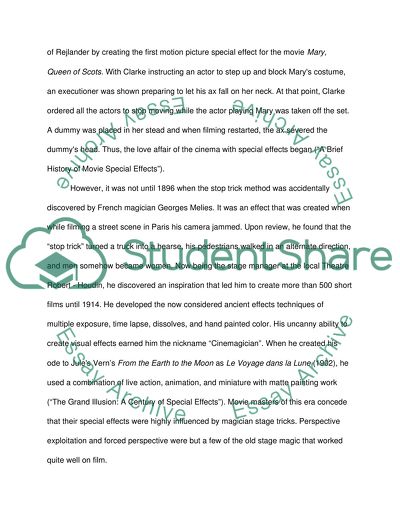Cite this document
(“History of Visual Effects Essay Example | Topics and Well Written Essays - 1500 words”, n.d.)
History of Visual Effects Essay Example | Topics and Well Written Essays - 1500 words. Retrieved from https://studentshare.org/visual-arts-film-studies/1475501-history-of-visual-effects
History of Visual Effects Essay Example | Topics and Well Written Essays - 1500 words. Retrieved from https://studentshare.org/visual-arts-film-studies/1475501-history-of-visual-effects
(History of Visual Effects Essay Example | Topics and Well Written Essays - 1500 Words)
History of Visual Effects Essay Example | Topics and Well Written Essays - 1500 Words. https://studentshare.org/visual-arts-film-studies/1475501-history-of-visual-effects.
History of Visual Effects Essay Example | Topics and Well Written Essays - 1500 Words. https://studentshare.org/visual-arts-film-studies/1475501-history-of-visual-effects.
“History of Visual Effects Essay Example | Topics and Well Written Essays - 1500 Words”, n.d. https://studentshare.org/visual-arts-film-studies/1475501-history-of-visual-effects.


